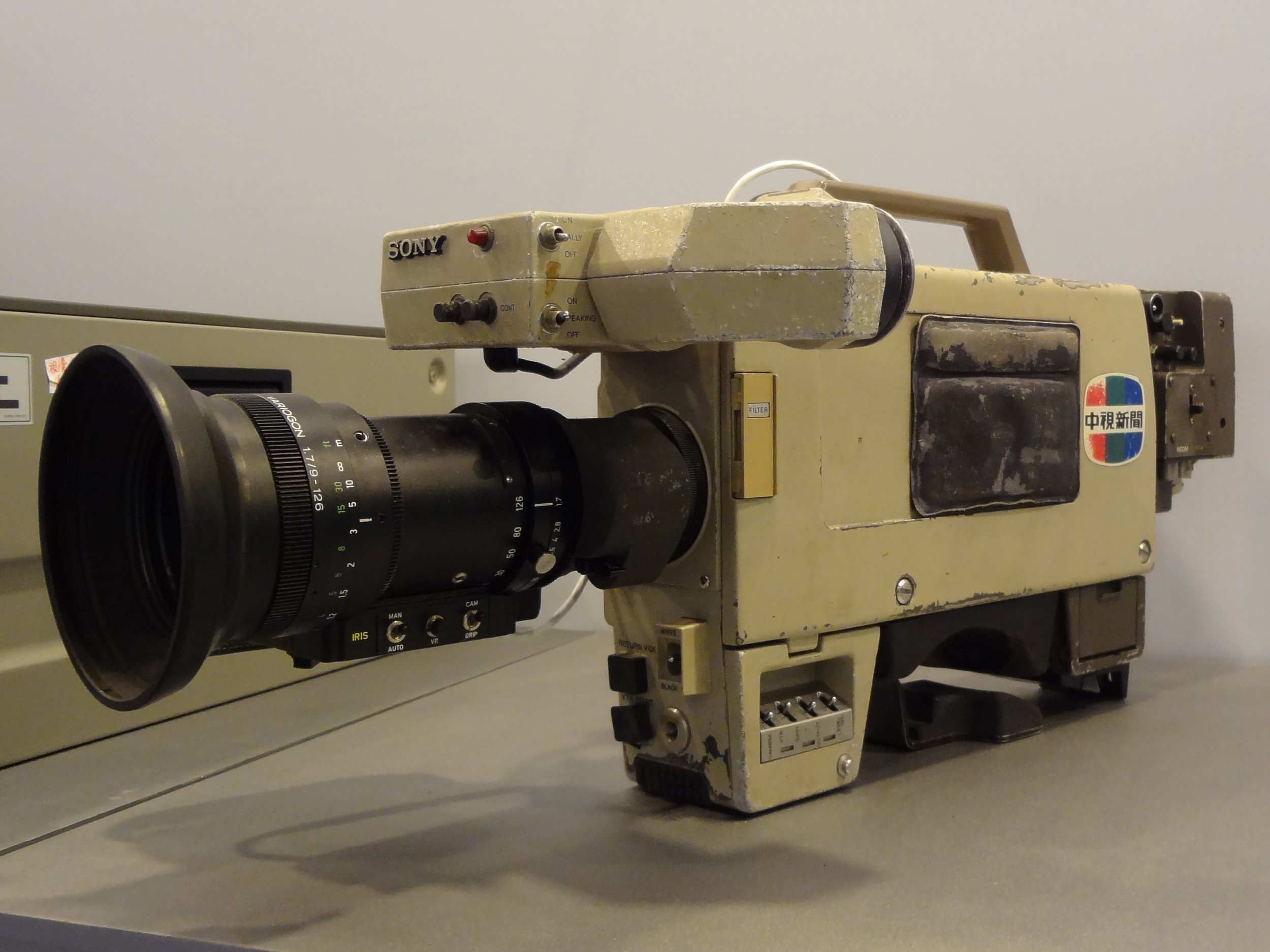Could a Native Parfocal Power Zoom Lens Revolutionize MFT?
Sony BVP-300 | Wikimedia Commons.
B4 power zoom lenses, with their versatile zoom ranges often spanning 8-120mm or more, have long been a staple in the broadcast and cinematography industries, offering parfocal performance and smooth zoom transitions for smaller 2/3-inch sensors. While these lenses excel in their niche, adapting them for larger formats like Micro Four Thirds (MFT) often results in compromises. This raises an exciting question, what if we designed a native parfocal power zoom lens specifically for MFT?
Cons of Adapting B4 Lenses:
• Smaller image circle designed for 2/3” sensors leads to vignetting on larger MFT sensors.
• Adapting B4 lenses often requires optical extenders, which degrade image quality and reduce brightness.
• These lenses are typically heavier and bulkier than what MFT users expect, reducing portability.
• Adapters can be costly and cumbersome, negating the affordability and simplicity of MFT systems.
Olympus Pen E-PL1 with Fotodiox Pro Lens Mount Adapter - B4 (2/3") ENG Cine Lens to Micro Four Thirds (MFT, M4/3) Mount and Canon J15×9.5b4.KRS Power Zoom Lens | Fotodiox.
The Micro Four Thirds (MFT) system has always been celebrated for its compact size, versatility, and creative possibilities. But one area where the MFT system could truly shine is with the introduction of a native parfocal power zoom lens, a tool that filmmakers and videographers have long relied on in broadcast and cinematic settings.
Parfocal zoom lenses are designed to maintain perfect focus while zooming in or out, an essential feature for seamless transitions during filming. When combined with a built-in 2x extender, such a lens could deliver unparalleled flexibility for MFT users. However, developing a lens like this comes with unique challenges and opportunities.
What Would a Native Parfocal Power Zoom Look Like?
Unlike adapted B4 lenses, which are designed for smaller 2/3-inch sensors, this lens would need to be purpose-built for the MFT format. That means creating an optical system that natively covers the MFT sensor’s 21.63mm diagonal without vignetting while keeping the design compact and lightweight.
Here’s a theoretical specification for such a lens:
• Focal Length: 12-60mm (24-120mm full-frame equivalent).
With the built-in 2x extender engaged, the range extends to 24-120mm (48-240mm full-frame equivalent).
• Aperture: Constant f/2.0 across the native zoom range. With the 2x extender, it would drop to f/4.0.
• Optical Design: Incorporates aspherical and low-dispersion elements to ensure sharpness and reduce distortions, with a native image circle optimized for the MFT sensor.
• Power Zoom: Features motorized zooming for smooth transitions, ideal for video applications, with adjustable speeds for precise control.
• Autofocus: A hybrid autofocus system combining phase-detect and contrast-detect for fast, accurate performance in both stills and video.
• Size and Weight: Approximately 6-7 inches long (150-180mm) and around 1.5-2 lbs (700-900g).
• Additional Features: Weather-sealing, optical image stabilization (compatible with in-body stabilization), and minimal focus breathing.
Why This Lens Matters
A native parfocal power zoom lens would address key needs for professional MFT users, offering a tool that balances flexibility, performance, and portability.
• For Filmmakers: Parfocal lenses ensure focus stays locked during zooming, making them essential for smooth, cinematic transitions. The power zoom functionality adds further precision.
• For Event Videographers: The 2x extender allows for versatile focal lengths, perfect for capturing both wide and close-up shots without changing lenses.
• For Wildlife Photographers: The extended reach with the 2x extender would allow for distant subjects to be captured with clarity and ease.
Challenges in Development
Designing such a lens is not without its obstacles:
1. Optical Complexity: A parfocal zoom with a built-in 2x extender requires precise optical alignment to maintain focus, sharpness, and minimal aberrations across the zoom range.
2. Light Loss from the Extender: A 2x extender inherently reduces light transmission by two stops. Starting with a wide aperture like f/2.0 mitigates this issue, ensuring usability in most lighting conditions.
3. Size and Weight: Incorporating advanced optical elements and a 2x extender increases the complexity of the design, but modern materials like fluorite and aspherical glass can help keep the lens lightweight.
4. Market Viability: A lens of this complexity and capability would likely be positioned as a premium product, with pricing expected in the range of $2,500 to $4,000. Its success would depend on balancing price with demand from professional users.
Deja Vu
Panasonic DVX200 | SYNTEX.TV
The Panasonic AG-DVX200, released in 2015, was an ambitious attempt to blend the large 4/3-type sensor format with a fixed 13x power zoom lens. It demonstrated that high-quality, parfocal power zoom lenses were not only possible for a larger sensor format but could also deliver impressive results in a compact camcorder form factor. While the camera had its limitations, most notably its fixed lens design and poor low light performance compared to other professional options, it proved that the technology for creating such a lens already existed a decade ago.
With the advances in Micro Four Thirds technology, the creation of a native interchangeable power zoom lens is more feasible than ever. Panasonic’s recent developments, such as the GH7’s DGO (Dual Gain Output) sensor, significantly improve low light performance, while phase detect autofocus offers fast, accurate tracking, perfect for a lens designed for professional video use. Additionally, the incorporation of computational tools like AI-powered stabilization or focus enhancements makes a modern MFT power zoom lens even more practical.
Imagine combining these features with a built in variable ND filter, giving filmmakers seamless control over exposure in varying light conditions. The foundational technology from the DVX200 is already there. The optical zoom mechanisms, parfocal design, and compact engineering… So adapting it to an interchangeable system for MFT cameras is entirely within reach. It would allow users to enjoy the ease of camcorder style shooting while keeping the flexibility to swap lenses for specialized projects/situations.
Notice the ND Filter selection toggle |Premiun Beat.
This lens wouldn’t just be a continuation of what the DVX200 started, it would be a leap forward, integrating cutting edge advancements and the adaptability filmmakers demand today. The result would be a tool that pairs perfectly with MFT’s ethos of portability and performance.
Theoretical Impact on MFT Ecosystem:
LUMIX GH7 | Panasonic.
If developed, this lens could redefine what’s possible within the MFT ecosystem. By combining professional-grade features with MFT’s hallmark compactness, it would provide a tool that rivals the capabilities of larger systems without sacrificing portability.
This lens would fill a critical gap, especially for professionals in filmmaking, event coverage, and wildlife photography. It could also serve as a showcase of MFT’s versatility, proving the format can meet the demands of even the most complex creative applications.
Why It Was Never Made:
• Market Demand: MFT systems have historically focused on portability and affordability. A professional-grade parfocal power zoom lens might have seemed too niche or expensive for the core audience.
• Technical Challenges: Developing a parfocal zoom with a large image circle and built-in 2x extender requires advanced optical engineering, which increases costs and complexity.
• Competition from Other Systems: Broadcast and cinema markets traditionally rely on systems with larger sensors (e.g., Super 35 or full-frame), leaving little incentive to develop such a lens for MFT.
Just make it already!
While this lens is theoretical, it represents the kind of innovation that could elevate the MFT system to new heights. A native parfocal power zoom with a built-in 2x extender could offer the perfect balance of flexibility, performance, and portability that professionals and enthusiasts alike are looking for.
What do you think? Would a lens like this fit your creative workflow? Share your thoughts and let’s keep the conversation about MFT’s potential alive.






